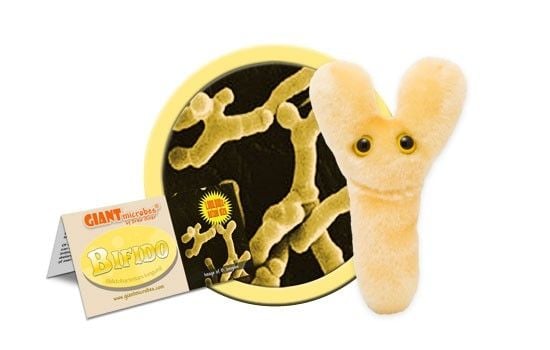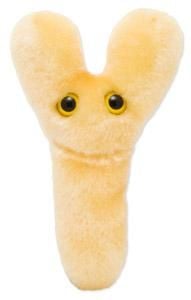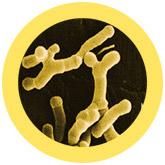Bifido (Bifidobacterium longum)
Product Details
Additional Information
| Sizes | Giantmicrobes are based on actual microbes, cells, organisms and other critters, only 1,000,000 times actual size! Gigantic (GG) 40-60cm XL (XL) 25-38cm Original (PD) 12-20cm Minis (MM) 5-10cm each Keychain (KC) 5-10cm with clip |
|---|---|
| Materials | Plush from all new materials. Stuffed with polyester fiber fill. Surface washable: sponge with water & soap, air dry. |
| Packaging | Each plush microbe includes a printed card with fun, educational and fascinating facts about the actual microbe or cell. |
| Safety | Every product meets or exceeds U.S. and European standards for safety. For ages 3 and up. |
All about Bifido (Bifidobacterium longum)
FACTS: Human prejudice against bacterial infections is understandably widespread. But fortunately, one of the most prevalent bacteria in the human intestinal tract is Bifidobacterium longum – and it’s good for you!
Bifidobacterium are one of a number of probiotic (“pro-life”) bacteria that perform a range of useful services such as improving digestion, revving up the immune system, and fending off their pathogenic cousins.
B. longum does its good works by converting sugars into lactic acid through fermentation. Lactic acid enhances the digestibility of milk products, helps the body use calcium, phosphorous, and iron, stimulates the production of gastric juices, and assists in moving food through the digestive system.
Among the first microbial inhabitants to take up its duties in the gut, it is commonly introduced shortly after birth when a child drinks its mother’s milk. As a result, formula-fed babies typically have fewer B. longum bacteria which can make them more susceptible to diarrhea, allergies, and chronic intestinal inflammation. Fortunately, there are plenty of stray Bifidobacterium looking for homes – eventually, just about everyone gets infected.
Of course, from time to time our populations of these friendly organisms can suffer: for example, antibiotics taken for illness are sometimes indiscriminate in their effects. But eating foods such as yogurt or taking dietary supplements can help restore Bifido populations – and keep one of man’s best friends on guard.
| Description | The body relies on these probiotic microbes to break down food, promote the immune system, and protect against potential pathogens. They’re always among the first on the scene to colonize and recolonize sterile guts. That’s why Bifido are often prescribed to replace normal flora after intensive antibiotic or chemotherapeutic treatments. |
|---|
| Name | The microbe gets its name from the Latin root word “bifidus” meaning to fork, and “longus” meaning long. This describes the bacteria’s long ‘Y’ shape. |
|---|
| Actual Size | 1.0 x 8.0 micrometers, that’s 10 thousand times smaller than a crayon! |
|---|
| Where It Lives | Bifidobacterium longum is one of several Bifidobacteria species found in human digestive flora, microbes normally found in the human digestive tract. These bacteria aid the human body to fend off harmful bacteria that may target the gut, or enteric pathogens. They’re found in higher numbers in babies who were breast-fed than babies who were bottle-fed. |
|---|
| History | First discovered in 1899 in the feces of breast-fed infants by French pediatrician, Henri Tissier. |
|---|
| Fascinating Facts | It’s used to make cheese, yogurt, and probiotic supplements. |
|---|






